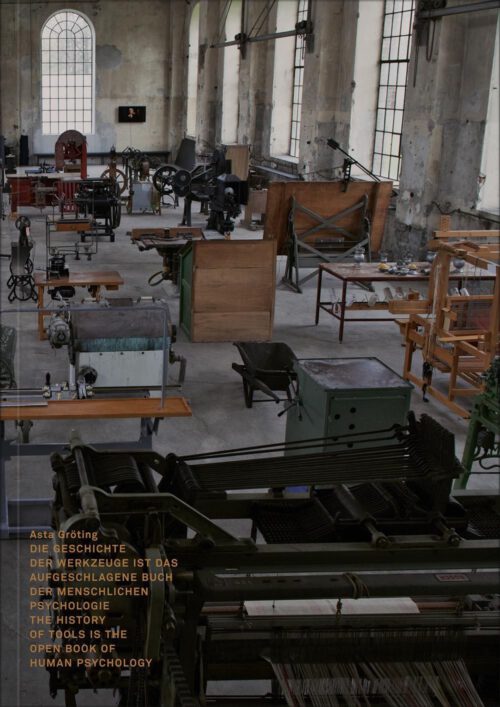In her broadly diversified artistic practice, the sculptor Asta Gröting has since the mid-1980s been translating sculptural thinking into a wide range of media. She develops works that render psychological and emotional perspectives on complex human relationships in lucid forms.
Handicraft, or the relation of human beings to the work of their hands, is a recurrent theme of Gröting’s work. In Dornbirn, she has assembled workbenches (looms, sewing machine tables, embroidery machines, desks, lathes) in an installation drawing on the history of handicraft and industry in the Vorarlberg. By means of the dense juxtaposition of various kinds of worktables used in textile and metal ware production, the sculptor makes visible the transformation of Vorarlberg trades in the nineteenth and twentieth centuries, endowing the objects with a fresh language. They thus tell the story of the development of handicraft into industry and of the concomitant loss of the physical relation to work. The work-traces and the now hardly known technical functions of the workstations point to a blank space, to bygone users and their bygone skills, embedded in the objects. In her works, Gröting seeks to grasp the invisible in formal terms and give it shape. The publication was published on occasion of Asta Gröting's solo exhibition at Kunstraum Dornbirn.
HOME

